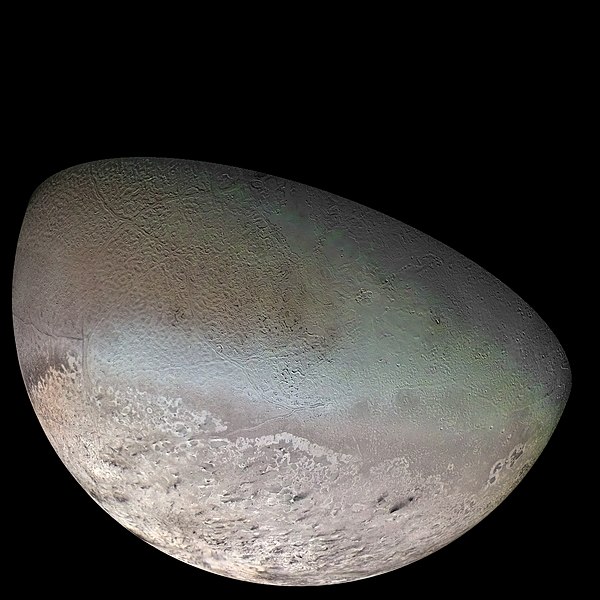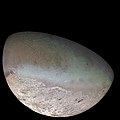Faịlụ:Triton moon mosaic Voyager 2 (large).jpg

Otu nyochaa a ha:600 × 600 piksels Ndị ọzọ mkpebi:240 × 240 piksels | 480 × 480 piksels | 768 × 768 piksels | 1,024 × 1,024 piksels | 2,048 × 2,048 piksels | 4,700 × 4,700 piksels.
Failụ si na nke mbu (4,700 × 4,700 pixel, ívù akwukwo orunótu: 12.11 MB, MIME nke: image/jpeg)
Ịta nke usòrò
Bìri èhì/ogè k'ị hụ òtù ụ̀fa dị̀ m̀gbè ahụ̀.
| Èhì/Ogè | Mbọ-aka | Ógólógó na asaá | Òjìème | Nkwute | |
|---|---|---|---|---|---|
| dị ùgbu â | 19:40, 10 Ọktoba 2011 |  | 4,700 × 4,700 (12.11 MB) | Jbarta | Minimally compressed JPG from TIFF original at NASA. This image has already been colored by NASA. I think we have no business trying to "fix" the coloring. The only alteration made from the NASA original is to enlarge the canvas to enclose the complete sp |
| 21:00, 1 Jenụwarị 2010 |  | 4,600 × 4,600 (2.81 MB) | Supportstorm | Image Adjustments: Auto levels on contrast and color | |
| 21:59, 18 Febụwarị 2008 |  | 4,600 × 4,600 (1.71 MB) | Kaldari | same image, better dimensions | |
| 04:59, 8 Eprel 2005 |  | 4,500 × 3,500 (1.96 MB) | Bricktop | same image, higher resolution | |
| 17:13, 3 Eprel 2005 |  | 1,024 × 796 (150 KB) | Smartech~commonswiki | A color mosaic of Triton, Neptune's moon (large). Taken by Voyager 2 in 1989. Color was synthesized by combining high-resolution images taken through orange, violet, and ultraviolet filters; these images were displayed as red, green, and blue images and |
Ojiji faịlụ
Ihe ndị na-eso ihe eji Ihu akwụkwọ eme na faịlụ a:
Ejiji failụ zụrụ ọha
Wikis ndi a edeputara na eji kwa failụ a:
- Ihe eji na af.wikipedia.org
- Ihe eji na an.wikipedia.org
- Ihe eji na ar.wikipedia.org
- Ihe eji na ary.wikipedia.org
- Ihe eji na arz.wikipedia.org
- Ihe eji na ast.wikipedia.org
- Ihe eji na azb.wikipedia.org
- Ihe eji na az.wikipedia.org
- Ihe eji na be-tarask.wikipedia.org
- Ihe eji na be.wikipedia.org
- Ihe eji na bg.wikipedia.org
- Ihe eji na bn.wikipedia.org
- Ihe eji na bn.wikibooks.org
- Ihe eji na bs.wikipedia.org
- Ihe eji na ca.wikipedia.org
- Neptú (planeta)
- Satèl·lit natural
- Satèl·lits de Neptú
- Voyager 2
- Cronologia del descobriment dels planetes del sistema solar i dels seus satèl·lits naturals
- Viquipèdia:Articles espacials seleccionats
- Plantilla:Article espacial 01
- Llista d'objectes del sistema solar en equilibri hidroestàtic
- Llista de satèl·lits naturals
- Nomenclatura dels satèl·lits naturals
Lee more global usage of this file.

